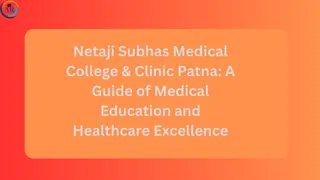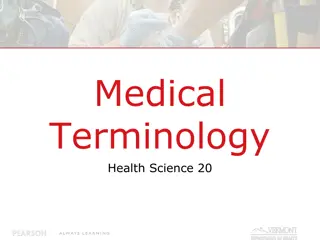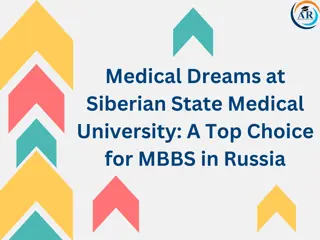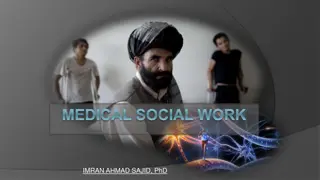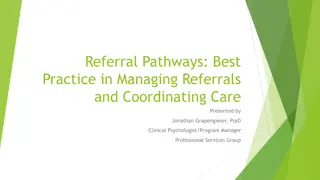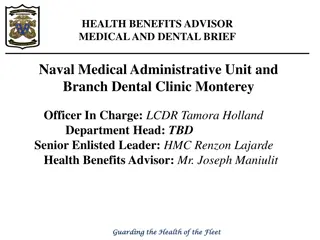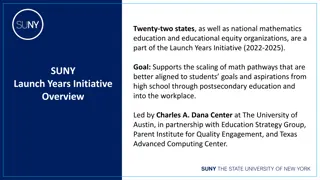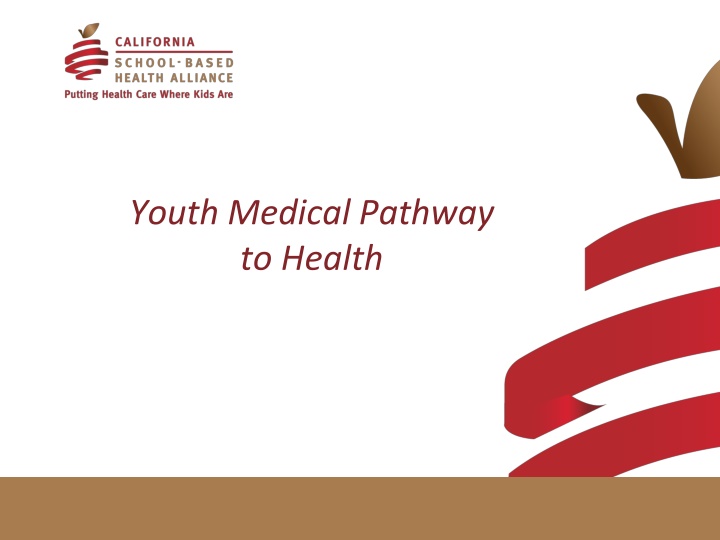
Exploring Pathways to a Career in Health for Youth
Discover the varied pathways available for youth to pursue a career in the health field, ranging from general medical career routes to educational requirements and practical steps. Gain insights on how to enter the health field, understand the distinctions between different pathways, and explore areas of interest related to health professions. Presented by the California School-Based Health Alliance, this webinar offers valuable information on shaping a future in health services.
Download Presentation

Please find below an Image/Link to download the presentation.
The content on the website is provided AS IS for your information and personal use only. It may not be sold, licensed, or shared on other websites without obtaining consent from the author. If you encounter any issues during the download, it is possible that the publisher has removed the file from their server.
You are allowed to download the files provided on this website for personal or commercial use, subject to the condition that they are used lawfully. All files are the property of their respective owners.
The content on the website is provided AS IS for your information and personal use only. It may not be sold, licensed, or shared on other websites without obtaining consent from the author.
E N D
Presentation Transcript
Youth Medical Pathway to Health
Webinar Housekeeping Everyone is in listen-only mode. Two listen options: phone or web (phone tends to be better!) Type questions in "chat box" located in the sidebar to the right. If you are having technical difficulties please be sure to address the panelists and we will do our best to help you. The webinar is being recorded. Supporting materials will be available on our website within one week of this webinar.
Presentation Objectives Upon completion of this webinar, participants will be able to: Identify some pathways to enter health field Describe the differences between different types of pathways Discuss about your interests in these pathways
Introduction Molly Wu Youth Board Member
California School-Based Health Alliance The California School-Based Health Alliance is the statewide non-profit organization dedicated to improving the health and academic success of children and youth by advancing health services in schools. Our work is based on two basic concepts: Health care should be accessible and where kids are Schools should have the services needed to ensure that poor health is not a barrier to learning.
General Medical Career Pathway Graduate from high school Obtain a Bachelor's degree Take the Medical College Admissions Test (MCAT) Graduate from Medical School Complete a medical residency training program Complete fellowship training Get a State Medical License
Step 1. Graduate from high school Required for college admission Opportunity to explore pre-med courses and extracurricular activities (chemistry, physics, biology, etc.) Can help determine if the medical field is for you
Step 2. Obtain a Bachelor's degree You can major in anything you want! Completion of medical school requirements is necessary Strong GPA Courses and extracurricular activities
Step 3. Take the MCAT Changing in 2014 to include biochemistry, psychology, and sociology, increasing the number of classes Test content that s taught in year-long introductory courses in biology, general chemistry, organic chemistry, and physics. Verbal reasoning and scientific reasoning.
Step 4. Graduate from medical school Required Time about 4 years Obtain a medical degree such as an M.D. (allopathic medical degree), PhD (doctorate) or D.O. (doctorate of osteopathic medicine) from an American medical school
Step 5. Complete a medical residency training program Required time 3-5 years (depending on specialty) The length of the medical residency training program you must complete varies according to the medical specialty in which you are training.
Step 6. Complete the fellowship training A fellowship training program may be as short as 6 months or up to 3 years in length. (varies per specialty) Not all medical doctors must do fellowship training. Certain medical specialties require fellowship training, such as cardiology and gastroenterology. Some fellowships are optional, such as certain types of surgical training.
Step 7. Get a medical license Required time: several hours to complete application and gather documentation, and then wait for 3-9 months In addition to your US medical license, you must also have a state medical license in the state where you plan to practice.
Before College Focus on science and math courses and take advantage of AP/Honors/IB courses. Maintain a good GPA. The higher your GPA and the more you participate in extracurricular activities, the better your chances will be of getting accepted into the colleges of your choice.
College Pathway 1 year of General Chemistry and 1 year of Organic Chemistry 1 year of each: Physics, Biology, Mathematics, English Strongly recommend 1 semester of each: Psychology, Sociology, Statistics and Biochemistry
Different Medical Career Professions you can pursue Doctor of Medicine Doctor of Osteopathic Medicine Physician's Assistant Doctor of Podiatric Medicine Doctor of Optometry
Doctor of Medicine Physician who examines patients, gather their histories and inform them on their health status Minimum degree required is Doctor of Medicine Degree Typically 8 years
Doctor of Osteopathic Medicine Osteopathic physicians have a historically more holistic approach to medicine with an emphasis on bone and joint manipulation Minimum degree required is Doctor of Osteopathic Medicine Degree Typically 8 years
Physician's Assistant Do basic medical tasks such as diagnosing illness, running tests, conducting physical exams, prescribing medications, ect. Minimum degree required is Master's Degree in Physician Assistant Studies, Health Science or Medical Science 6-7 years
Doctor of Podiatric Medicine Specializes in feet, ankles, and lower extremities. They can perform surgeries and exams, order therapy, etc. Minimum degree required is Doctor of Podiatric Medicine Degree 8 years
Doctor of Optometry Specializes in vision. They can perform surgery as well. Minimum degree required is Doctor of Optometry Degree 8 years
Thank you! Reminder: All materials and a recording of this webinar will be available by the end of this week.



